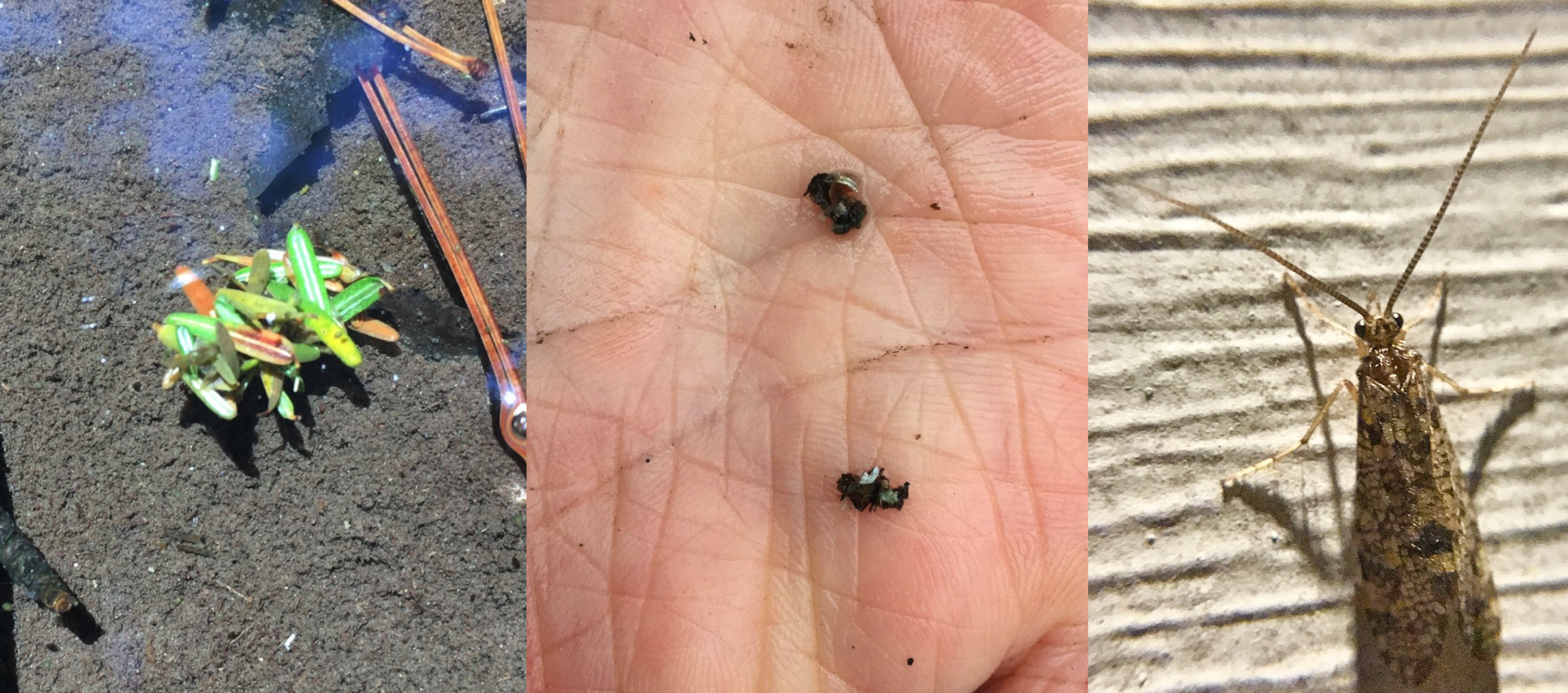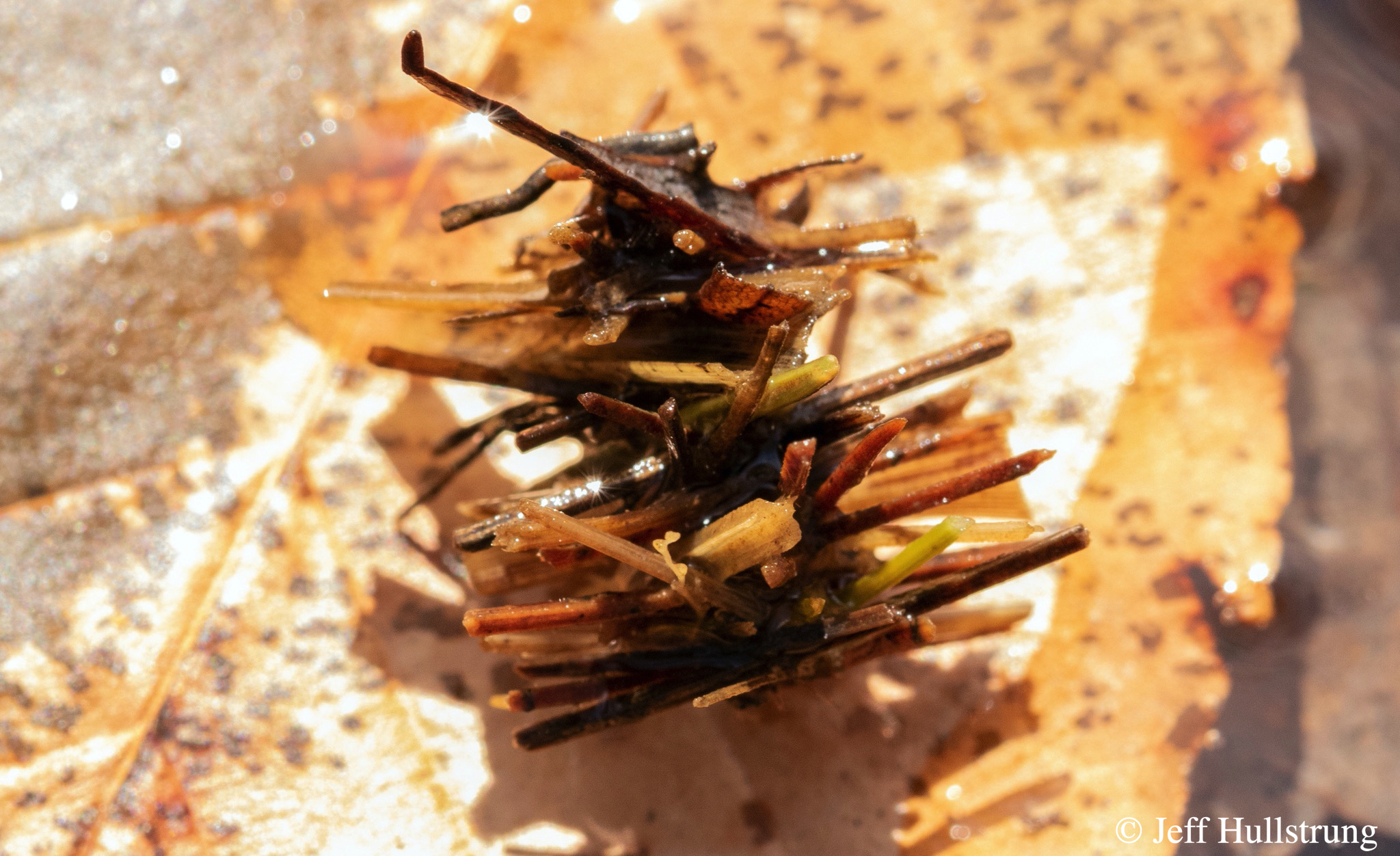Many people are likely better aquatinted with moth-like adult caddisflies than their aquatic larvae. Temporary residents in many bodies of water, larval caddisfly build elaborate cases of silk, gravel, and vegetation for protection and camouflage.
Caddisfly larvae are diverse in size, case construction, and habitat. They are frequently used as environmental indicators of water quality and ecosystem health in lakes, rivers, and ponds, and vernal pools.
Among the most well known caddisflies in Vermont are members of the family Limnephilidae, known colloquially as northern caddisflies. This large family of approximately 100 genera includes several “log-cabin” caddisflies in the genera Limnephilus and Platycentropus, so-called because of their case construction of vegetation laid horizontally.

(Left-to-right) Caddisfly larva © Lynnwood Andrews. Caddisfly larvae © Cindy Sprague. Caddisfly adult © Kevin Tolan.
In general, species diversity of caddisflies increases with hydroperiod.
VAL Observations







